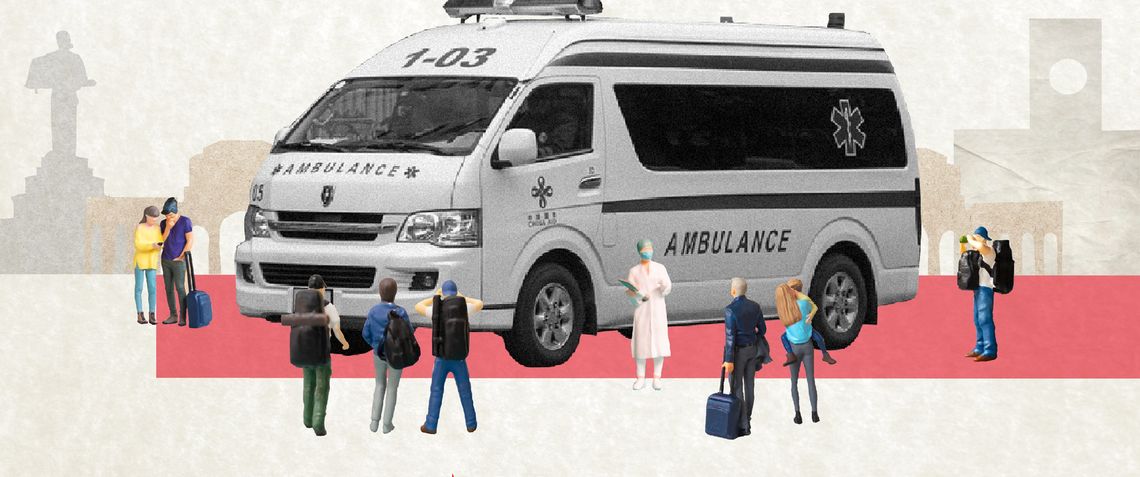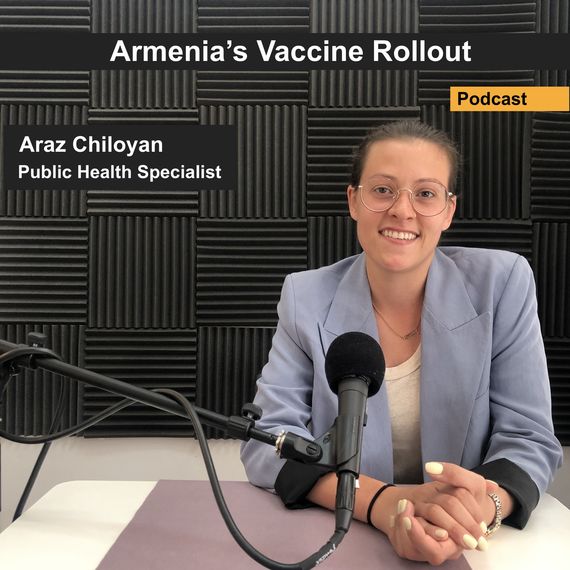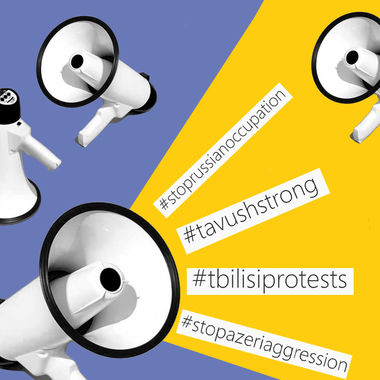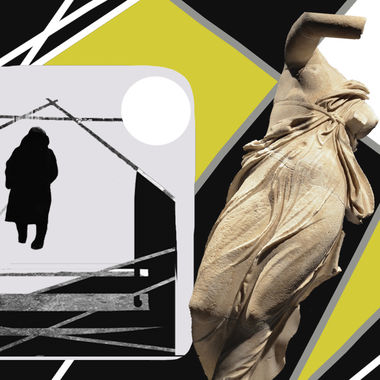Sun Aug 22 2021 · 10 min read
Armenia’s Post-COVID Tourism Development Prospects

By Hranoush Dermoyan

Illustration by Armine Shahbazyan.
Tourism was considered to be one of the fastest growing industries worldwide before the COVID-19 pandemic hit the global economy. In 2019, the direct contribution of tourism to global GDP was $2.9 trillion, and the total contribution was $9.3 trillion. For Armenia, tourism accounted for 11.8 percent of GDP in 2019 and 12.5 percent of employment.
In Armenia, tourism started to grow rapidly during the last 10 years; the number of tourists visiting Armenia tripled from 2010 to 2019. In February 2020, Armenia was listed as one of the world’s top 20 fastest-growing tourist destinations by the United Nations World Tourism Organization (UNWTO). In 2019, 1,894,377 tourists visited Armenia and, according to projections the number of incoming tourists was supposed to rise even more during the following years, especially due to the fact that more flights were planned to operate. Ireland-based Ryanair announced in October 2019 that it would operate several flights to and from Armenia. Hungarian low cost airline Wizz Air was also going to operate flights to and from Armenia starting in April 2020. Unfortunately, these grand plans hit a major delay.
The Impact of the Pandemic on Tourism
The COVID-19 pandemic changed the prospects for the development of tourism. It hit the tourism industry hard globally and Armenia was not spared. As much of the world went into lockdown in 2020, international travel ceased almost completely.
On March 16, 2020, the Armenian government declared a State of Emergency and international flights almost completely ceased to operate. Soon after, Armenia and Georgia closed their land border, making it virtually impossible to enter or leave the country. The land border with Iran was closed even earlier, in February 2020, when it became apparent that Iran was one of the early hotspots. Many small businesses providing accommodation and tour services were forced out of business. Tourism almost came to a standstill in Armenia, though it found some relief during the summer months through September due to domestic tourism. The unpredictable nature of the pandemic hindered many countries from opening up completely in 2020 and people are still anxious to travel in 2021.
Nonetheless, one year after the outbreak of the pandemic, the world seems to slowly be opening up. Even though many restrictions are still in place, international flights started to operate and many countries started to open their borders to those with negative COVID-19 test results and/or vaccination records. Armenia has also resumed most of its air travel and has re-opened its borders with Georgia and Iran.
Post-Pandemic Global Tourism Trends
This year, global tourism has specific characteristics. Many tour providers have to tailor their offers around restrictions and people’s desire and need to be safe. Tourists also have to plan accordingly and take into account details, such as the possibility of new lockdowns and restrictions, and surges in the number of new COVID-19 cases.
Experts predict that the way tourists travel and choose destinations will change. People will start travelling at a slower pace and visit multiple destinations during one trip rather than travel to one point and then back. Armenia can benefit from this, as many tourists visit the South Caucasus as a package, but much will depend on the situation in neighboring countries, especially Georgia.
According to some predictions, tourists will spend more time on their vacations due to new opportunities for remote working. Travellers will also be more conscious about where they spend their money and will want to connect with the local people and culture. However, this will have to be in a safe environment.
According to the World Bank, governments and tour providers can take three steps to move forward after the pandemic: 1) improve traveller confidence, 2) incorporate new market trends and drivers for demand into their strategies and 3) focus on resilience, inclusiveness and sustainability.
At this stage and for the foreseeable future, health safety will be a major concern for travellers. In many countries, there will still be restrictions in place, tests or proof of vaccination will still be mandatory in many places. Vaccination numbers can play an important role in determining how fast tourism will recover to pre-pandemic levels in the coming years in Armenia.
At the same time, it is still uncertain what further restrictions future travel will face. Governments and tour operators will have to track changes and adjust regulations and offers based on what the global pandemic situation dictates.
Armenia Is Opening Up to International Travel
Armenia started to ease restrictions for international travellers in 2021. At the beginning of the year, flights to and from Russia resumed. Flights to Europe also started operating again; Wizz Air started to operate round trip flights between Yerevan and Vienna on July 7, 2021, Lufthansa also re-entered the Armenian market and started operating roundtrip flights to Frankfurt on August 13. On June 1, the land border with Georgia was opened on both sides. The land border with Iran was also opened earlier in the year.
The Armenian government saw an opportunity to boost tourism through vaccinations. Since there are not many vaccination options available in Iran, and Armenia offered free vaccinations for foreigners, many Iranians started to come to Armenia to get vaccinated. Especially in June and July, hundreds of Iranians travelled to Armenia to get vaccinated. Although the government tried to use this as an opportunity to boost tourism, as the lines near mobile vaccine stations grew longer and Iranians started to spend the night near vaccine stations, the Armenian government started to impose restrictions.
It was decided that free vaccinations for foreigners would be offered only at mobile stations in the city center, and only the AstraZeneca vaccine would be offered to tourists. Then, on July 13, it was decided that foreigners can get free COVID-19 vaccinations in Armenia only if they have stayed in the country for at least 10 days. This decision had a negative impact on the number of Iranians coming to Armenia.
The government also changed visa regulations. It was previously possible for citizens from a number of countries to receive their visa upon arrival at the airport; now, they have to apply for electronic visas ahead of time, a process that can take up to three days. This change will also negatively impact tourists booking last minute trips to Armenia, notably those traveling in Georgia who might have made a spontaneous decision to also see Armenia.
Armenia requires a negative PCR test or a vaccination card to enter the country, a common requirement for almost all countries these days. One major factor which may impact the number of visitors coming to Armenia in the future may be the country’s low vaccination numbers. As mentioned, many tourists will be looking for safe places to travel. The vaccination process in Armenia has been very slow. As of August 8, the percentage of fully-vaccinated people in Armenia was around 2 percent. It must also be noted that vaccination numbers published by the Ministry of Health do not indicate how many of those vaccinated are locals and how many are foreigners.
Impact of Current Travel Trends on the Armenian Tourism Sector
Over 60,000 tourists visited Armenia from the United States in 2019, representing the 4th highest number of tourists from a single country. Armenian-Americans make up a considerable proportion of this number. However, according to 2021 predictions, many Americans will prefer to travel within their country.
Around 180,000 tourists visited Armenia from Europe in 2019. Many Europeans will also be inclined to travel within their respective countries and neighboring countries, and may refrain from planning longer trips.
Many European countries publish lists of which countries are safe to travel to and which are not. For example, for the UK, Armenia is listed as an “amber” country, which means citizens of the UK can travel to Armenia but they will be facing precautionary measures upon return. As of now, Georgia is listed as “red,” as the number of new infections are high there. A large number of tourists come to Armenia from Georgia via the land border. EU member states also have different regulations regarding who can enter their countries and what their own citizens have to do when they travel to certain countries. For example, Germany may require a negative COVID-19 test for its own citizens. Over 30,000 German tourists visited Armenia in 2019.
The Armenian Tourism Industry Was Facing Challenges Before the Pandemic
In November 2019, the Armenian tourism committee drafted a strategy for developing tourism in Armenia in 2020-2030. The document states that tourism is one of the major driving forces of the Armenian economy. In order to further boost the development of the tourism sector, the government intends to develop infrastructure and improve the quality of services, diversify offers for tourists, ensure a rising number of tourists visiting Armenia, create opportunities so that tourists stay longer in Armenia and improve Armenia’s ranking on the global tourism map.
The strategy also assesses the challenges facing the development of tourism in Armenia. In particular, Armenia faces challenges regarding awareness about the country in the global tourism market, accessibility, domestic infrastructure, diversification of touristic activities and leisure.
Armenia is not well known in the global tourism market. Many travelers who visit Armenia do so based on word of mouth; they have heard about the country from other people. Marketing campaigns directed toward attracting tourists to Armenia do not yield sufficient results.
Armenia is difficult to reach, despite its geographically favorable location. This is mainly due to the limited number of airlines that service the main airport and insufficient infrastructure for land transportation. For many travellers, reaching Armenia by air is hard and expensive due to a limited number of flights and lack of external links. The strategy document also mentions that the abilities of air carriers and infrastructure are not sufficient to ensure further growth. The fact that two of Armenia’s four land borders are closed also creates obstacles for the tourism sector to grow. Due to this fact, the tourism sector in Armenia is somewhat dependent on Georgia. One bright spot is that a partnership was recently announced with UAE-based Air Arabia to launch a new national airline based out of Armenia.
Another challenge is the condition of roads within the country. Many interesting sights become inaccessible for tourists because of poor road conditions. Paving them would help diversify what Armenia has to offer. It is also difficult for tourists to reach tourist sights via local public transport. Cities, towns and villages are not connected with each other through any type of public transport; travellers have to return to Yerevan if they want to go from Yeghegnadzor to Dilijan, for example. Also, many buses and marshrutkas (minivans serving as public transport) don’t have English signs, and drivers usually don’t speak English.
The vision of the 2020-2030 tourism development strategy is to make Armenia known in the global tourism market, ensure accessibility, and offer quality service and a diverse experience for tourists. This entails that all of these challenges have to be tackled and solved.
In January-December 2019 1,894,377 foreigners visited Armenia for tourism compared to 5 million tourists to Georgia. In recent years, Georgia is appearing more and more in international travel magazines, and it is making many lists of top travel destinations. While Armenia can be spotted here and there as well, there is still work to be done. Georgia is twice the size of Armenia, and has more diversity in terms of landscapes. It also has access to the sea and many Armenians and Azerbaijanis visit the country for seaside vacations. Nevertheless, the country advertises its culture, wine history and different landscapes quite well. Armenia is lagging behind in terms of trying to present its diversity. Armenia seems to be known only for its churches. Georgia is also easier and less expensive to reach via air and land. This is the reason why many tourists who visit Armenia prefer to fly in and out of Georgia. As a consequence, they spend only a few days in Armenia.
What Does the Future Hold for Tourism in Armenia?
It is yet uncertain when pandemic-related restrictions will be lifted. Vaccination numbers remain low in many parts of the world. The effectiveness of the existing vaccines also remains to be seen, especially given the fact that new strains of the virus continue to emerge. Under this uncertainty, it is still difficult to predict when international travel will return to pre-pandemic levels. Although lockdowns are rarer and international flights have resumed, safety is a major concern and will remain so as long as COVID-19 lingers around.
Besides safety concerns, the amount of restrictions a country imposes on international travellers will also play an important role in attracting travellers.
Armenia attracts tourists who want to travel off the beaten path, who do not want to visit overcrowded places and are interested in its unique culture, traditions and history. It also has an allure as a country which is not overcrowded with tourists. This may still interest those who will venture to travel during the pandemic if restrictions are not too strict and safety is guaranteed. However, the global tourism market has shrunk, and Armenia is competing with more popular tourist destinations.
The future of tourism in Armenia also depends on its neighboring countries, especially Georgia. Many travellers combine the three countries or at least Armenia and Georgia. Even travel guides suggest visiting the three countries together. Given that Georgia has more and cheaper flights than Armenia, whether people will be able to travel to Georgia or not may have a big impact on travelers visiting Armenia.
The Armenian tourism industry is facing not only challenges imposed by the pandemic, it also has other issues to solve, from creating more awareness about the country abroad to improving local infrastructure.
And lastly, the COVID-19 pandemic is not the only obstacle hindering the development prospects for tourism in Armenia. Regional and border stability will also play an important role once travel resumes in full force.
See More of Our Covid-Related Stories
Activism in Times of a Pandemic: A Case Study on the South Caucasus
By Andranik Shirinyan
Innovative forms of activism emerged in different societies to overcome the limitations of physical distancing amid the COVID-19 pandemic.
How Facebook Became a Depository of Armenian Art and Culture
By Arpine Haroyan
When a State of Emergency was declared on March 16 in Armenia, cultural institutions mobilized their resources and opened their treasuries digitally showcasing the gems of Armenian culture.
Domestic Violence and the Pandemic: How the Vulnerable Have Become More Vulnerable
By Astghik Karapetyan
Women, the elderly and children living under the same roof with violent abusers became even more vulnerable during the quarantine. Calls to domestic violence hotlines in Armenia have increased by almost 30%.
Children: The Hidden Victims of the Pandemic
By Maria Titizian
Over 90 percent of the world’s student population have seen their education interrupted because of the COVID-19 pandemic. While education is the most visible issue, the impact on children cuts much deeper than is being recognized.
The World Will Never Be the Same Again
By Suren Manukyan
Historian Suren Manukyan traces the impact that global pandemics have had on the course of human history.
Distance Education in Times of Coronavirus
By Narek Manukyan
Educational institutions around the world are moving to online learning as the COVID-19 pandemic wreaks havoc. Narek Manukyan examines the Armenian education system’s preparedness for distance learning following the government’s announcement of a one-month state of emergency in the country.
Scaling Up: These Five Armenian Tech Companies Are Making Pandemic Life a Little Easier
By Tatev Mkrtumyan
Tatev Mkrtumyan looks at five startups from the Armenian tech scene that are making a splash in four main industries that are growing during the pandemic.
Podcast

Armenia’s COVID-19 vaccine rollout has been comparably slow. To date, just over 30,000 people have gotten vaccinated in the country. Public health specialist Araz Chiloyan who is working at the Ministry of Health focusing on vaccine procurement and distribution, speaks to EVN Report about the available vaccines, the issues and challenges with the vaccination effort.

Founder and CEO of WineWorks, Vahe Keushguerian speaks about the impact of COVID-19 on Armenia’s wine industry and how it revealed trends in the consumption of wine.










